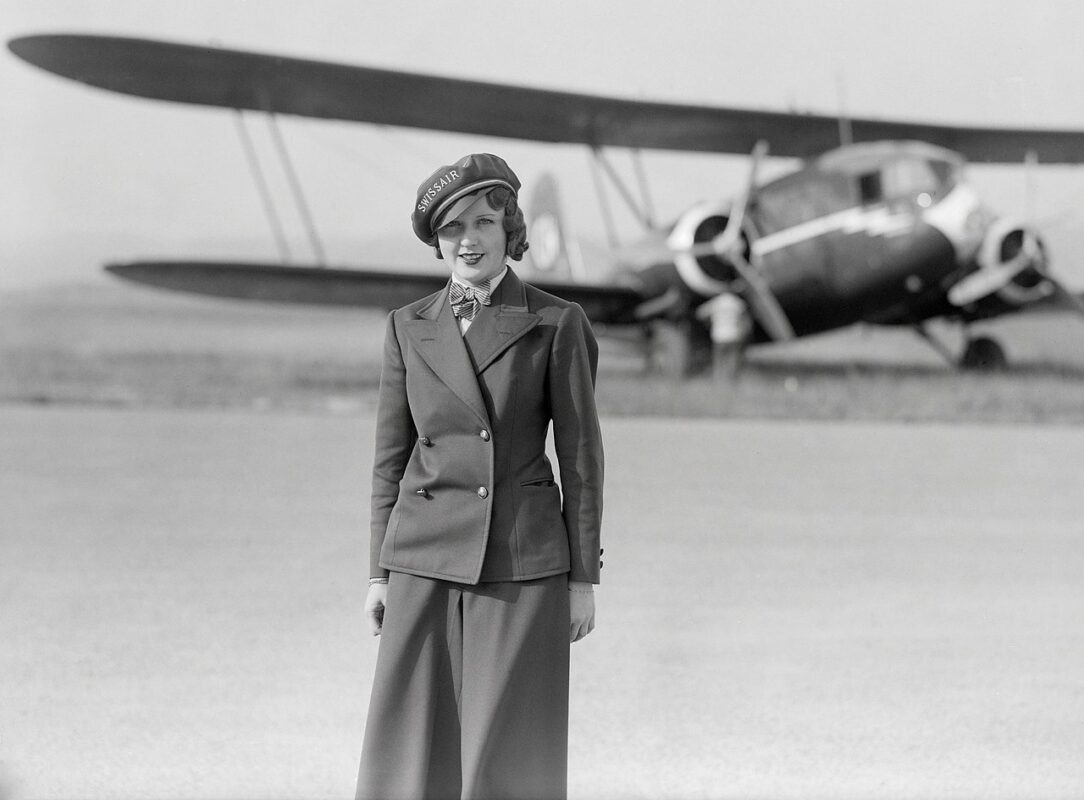Airline uniforms have always been a symbol of the aviation industry’s elegance and evolving fashion trends. From the early days of aviation to the present, uniforms have undergone significant transformations, reflecting broader societal shifts, technological advancements, and changes in the perception of the airline profession. This blog explores how airline uniforms have evolved over the decades, marking shifts in style, functionality, and cultural significance.

The Early Days: 1930s to 1950s
In the 1930s, when commercial air travel began gaining popularity, airline uniforms were heavily influenced by military attire, reflecting the origins of many early pilots. These uniforms were typically very formal, consisting of button-down jackets, caps, and even gloves, emphasizing the professionalism and prestige of airline staff.
By the 1940s and 1950s, as air travel became more accessible, there was a shift towards making airline uniforms more glamorous. Airlines began to see the value in branding and started to use uniforms to promote a luxurious image. During this era, female flight attendants’ uniforms included pencil skirts, tailored jackets, and hats, which were often designed by high-profile fashion designers.
The Jet Age: 1960s to 1970s
The 1960s ushered in the Jet Age, and with it, a revolution in airline uniform design. This period saw a departure from the conservative styles of the past towards more colorful and fashionable designs. The era was defined by bold colors, shorter hemlines, and even go-go boots. Designers such as Emilio Pucci and Mary Quant brought high fashion to the skies with vibrant, eye-catching patterns and modern silhouettes that mirrored the youth culture and optimism of the time.
Professionalism and Practicality: 1980s to 1990s
The 1980s and 1990s saw a return to a more conservative and business-like approach to airline uniforms. The focus was on professionalism and brand identity, with airlines opting for more subdued colors and practical designs. Uniforms included tailored suits, conservative skirts, and blouses for women, and simple, crisp suits for men. This period emphasized durability and functionality, accommodating the practical needs of airline staff.
The Modern Era: 2000s to Present
In the recent decades, airline uniforms have found a balance between style and practicality. The designs have become more inclusive and considerate of the diverse workforce wearing them. Today’s uniforms are designed to be comfortable yet stylish, incorporating breathable fabrics and more flexible designs that accommodate various body types and personal preferences.
Several airlines have also reintegrated the glamour factor, hiring well-known designers to create distinctive looks. These modern uniforms are not only functional but also serve as a powerful branding tool, reflecting the airline’s identity and values.
Conclusion
The evolution of airline uniforms reflects broader trends in fashion, society, and the aviation industry itself. From the military-inspired attire of the early days to the chic, functional designs of the modern era, airline uniforms serve as a fascinating lens through which to view changes in culture and technology. As we look to the future, it’s clear that airline uniforms will continue to evolve, combining style, functionality, and innovation to meet the changing needs of airline staff and their passengers.
By tracing the transformation of these uniforms, we gain insights into the dynamic nature of the aviation industry and its continuous drive towards improvement and adaptation. Whether aiming to impress, comfort, or brand, airline uniforms will remain an integral part of the travel experience, symbolizing both the legacy and the future of flight.

